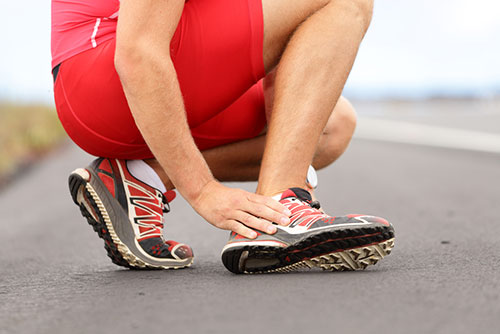
Athletes Prone to Stress Injuries
Stress injuries tend to take place over time. This group of soft-tissue injuries is also known as overuse injuries. That is because this type of injury typically has to do with repetitive motions. Tendinitis is the classic example of a repetitive motion stress injury. Sports injury specialists commonly see this soft-tissue injury. As explained by the AAOS, baseball players, golfers, swimmers, and tennis players tend to experience this inflammation of the tendons in their arms and shoulders. For runners, soccer players, and basket players, the tendons in the legs and feet tend to be more prone to this type of stress and inflammation.
Bursitis is another common soft-tissue injury in the repetitive motion stress category. This is often the result of a change in routine that brings increased, sustained activity, such as a new job or more ambitious workout routine. In the upper body, it typically impacts the elbow or shoulder. In the lower body, it strikes the ankle, knee, or hip. According to the AAOS, soft-tissue inflammation can cause the friction-reducing bursae, located between bones and soft-tissues, to also become inflamed. This can lead to further problems, including infection in the bursae. Timely treatment is important when dealing with this type of stress injury.
Sprains Happen Fast
Ligaments are fibrous, inelastic tissue that connects bones to bones. When this tissue is overextended, the ligament can be stretched or torn. This is a sprain. This is most typically due to an abrupt, unexpected, twisting type of motion, such as a fall. As explained by the AAOS, wrists, ankles, and knees are the usual site of such injuries. Sprains can also occur in other parts of the body, including the neck and back. Sprains can be very painful with significant swelling. In some cases, the pain and swelling can be so severe that it can be hard to tell the difference between a sprain and a fracture without medical care.
Treatment Varies
With both stress injuries and sprains, mild cases can often be easily treated. Typical recommendations include rest and treatment of the swelling and inflammation. For moderate to severe soft-tissue injuries, orthopaedic care is the safest route to prevent further or more long-lasting damage. Steroid treatments may be required for more severe inflammation. In the most severe stress injuries and sprains, surgical repair may be the most effective treatment option. Orthopaedic surgeons specializing in sports injuries have been among the leaders in putting modern theory and techniques into practice with impressive results.
Prioritize Prevention
Stress injuries and sprains can cause chronic pain, reduce mobility and contribute to a variety of other health problems. That should make the prevention of these sorts of injuries a priority and not just for professional athletes. The AAOS offers a wealth of advice for avoiding soft-tissue injuries. Follow the standard advice concerning exercise and strength training — work toward fitness goals gradually. Warm up and stretch properly before working out or playing sports. Take care with the daily diet. Nutritional support is essential for muscle repair and connective tissue development. Protect soft tissues by treating the body well. In the event of an injury, prevent a worse injury by seeing your health care provider promptly.

